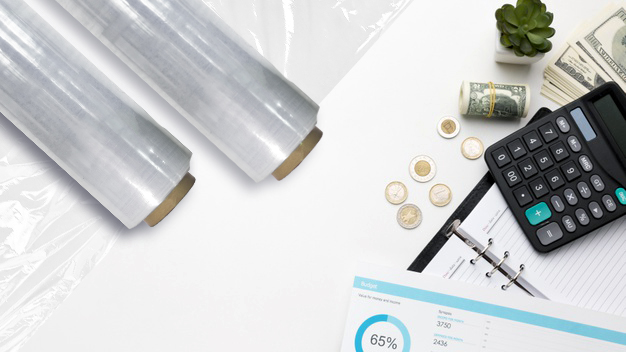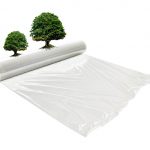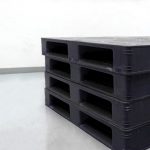
Do you know the true cost of film packaging for your business?
The question is one that is often asked but often left unanswered. With global e-commerce sales reaching $3.5 trillion in 2019, companies are looking to lower expenditures while taking advantage of this shift in momentum.
When it comes to cost reduction, businesses will always cut the packaging cost.
Thus, stretch film prices are often based on price per kilogram.
The lower, the better.
This seems sensible.
After all, the function of films seems similar enough, so “cheaper” helps lower costs and does the job just as well, right?
Wrong. And here’s why. In this article, we look at your costs holistically, starting from the true cost of your packaging.
Understanding the true cost of film packaging means knowing the actual price of wrapping each pallet.
Otherwise, you will most likely be spending more than you should.
It matters not what you pay for your film coming in the front door; the only cost is the per pallet price going out.
In short, when you know the actual cost per pallet going out, the purchase price is not as important anymore.
How Is The True Cost Of Film Packaging Calculated?
Businesses in the supply chain have lots of options when it comes to stretch film packaging these days.
And indeed, everybody wants the lowest cost and best savings because besides delivery. After all, a profitable bottom line is essential, and one of the ways to do that is to keep packaging expenses at a minimum.
Besides that, here is a list of costs that usually adds to your bottom line:
- Packaging – Materials used and how pallets are wrapped when being shifted out
- Consumer Satisfaction and Brand Reputation – Goods that are damaged because of insufficient packaging doesn’t leave a good impression and damages your market authority
- Transport Costs – Your packaging size, mode of transport, distance, weight, and requirements determine the shipping cost at the end of the day.
- Labour Expenses – How much labour it takes to wrap your packages? Some packaging materials could be more labour-intensive too.
- Product Replacement Expenses – Fragile products require attention and excellent care. It is expensive to replace them, and that requires more packaging protection to safeguard them.
- Floor Space – Space equals money. With more space, there are more storage capacities and work areas, resulting in higher yields and productivity. Creating additional space is beneficial to your business.
Let’s Talk About The True Cost Of Stretch Film Packaging
As an experienced player in the supply chain, you probably already know that pallet wraps vary considerably in performance and requirements. Different pallet load profiles and wrap requirements require different amounts of wrap to secure the load.
With these variations, there is no specific amount to pinpoint when evaluating roll prices. This is not the case of one size fits all.
Indeed, everyone wants to keep packaging costs low. However, the overall cost of packaging goes further than mere materials costs.
When the excitement of “low cost” dwindles, and look at the rationale, rolls could be priced that way because they mostly have less film.
It may be because they are of lower quality too.
Less film does not just mean you have less film to utilize per roll. It also entails more ordering, extra roll changes, more transport, more cores, more pallets, more machine downtime, and more labour costs.
That is a lot more and doesn’t seem to help with your sustainable goals, neither is for your overall cost.
Film Quality: Stretchability and Quality Factors in Your Costing
Film quality is a factor we cannot exclude. Here are some facts about it:
- Averagely, businesses utilize 200% more stretch film than needed
- 4% of all palletized goods damaged on arrival
- 25% of accidents concerning trucks are caused by falling or moving cargo
- Every film breakage averagely costs 15 Euros
Some stretch films on the market can stretch over 400%, while some fall short at 180%. Similarly, if your current machine setup can stretch up to 200%, it does not make sense to buy a film that can stretch 300%.
Stretchability and roll price may be attractive.
However, it does not mean that your total expenditure will also go down. It may just be the other way round.
Here are a few other things you may need in your list when determining the cost of stretch film packaging.
Damages can be prevented through quality.
When you purchase poor quality films, you always worry about the unsafe environment of pallets falling over when on the road. This is because inferior films tend to tear easily, causing unwanted damages to goods.
This is something you do not want to see in your delivery reports.
Not only is it risky, but it also means potentially spending more than expected.
Poorly graded stretch films don’t save cost. Instead, you will unnecessarily use more film than you should. Commonly, businesses use 20% more load packaging film than needed to ensure safe deliveries.
However, this may not help in contributing to reaching your sustainable goals.
The effects of these small details on the environment make us concerned. Living sustainably should be our goal.
Poor quality stretch films may seem economical at first, but in truth, it costs more than meets the eye.
If your packaging material isn’t safe enough, your products may be damaged by the time they reach their destination. Additionally, there is compensation for damaged products returned.
There goes the idea of saving because of choosing cheaper poor-quality films.
In summary, what are the other costs of choosing cheaper stretch films?
- Brand Image – Will it damage the reputation and image of your brand?
- Trustworthiness – Will your customers continue to trust you?
- Effectiveness – Will packaged goods be protected as they should?
- Additional Costs – Will there be worries of surprise costs that pop up due to damages or other matters?
- Protection – Will your goods truly be protected, and will your customers be satisfied with the effort you had given for protection?
- Goods – Will the film be suitable for the types of goods that you are packaging?
Many factories, distribution centres, and companies that run a lot of automation tend to overlook the total cost of protective packaging when evaluating options. Choosing the wrong material could cost you even more, driving up unexpected product replacement, labour, shipping, and storage costs.
Quality Film Saves and Serves You Better
At Thong Guan, we can help businesses like you choose quality stretch films that fit your products, transportation, machinery, labour, and optimization needs through data and intelligent insights.
Quality films mean more savings, less plastic waste, and a cleaner and greener world. Contact us at info@thongguan.com so we can talk about the true cost of your film packaging.
Together we can achieve better Total Cost of Ownership (TCO), save cost, and reach sustainability goals.





